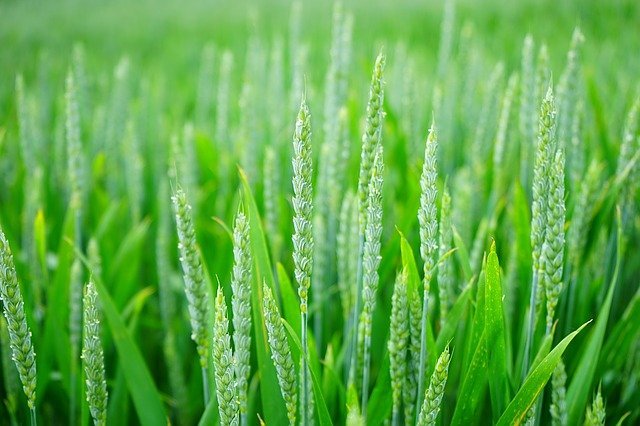
Let’s see what are the properties and benefits of wheatgrass, how to grow it and how to extract the famous wheatgrass juice at home.
What is wheatgrass and what benefits does it bring
When we talk about wheatgrass we refer to the grass produced from the seeds of wheat, barley and spelled sprouted for about fifteen days and consumed in the form of supplements or fresh juices.
Like most green leafy vegetables, wheatgrass contains vitamin A, vitamin E and vitamin C, minerals (calcium, iron, magnesium, potassium), enzymes, and chlorophyll , the pigment that gives vegetables their green color.
Wheatgrass has antioxidant properties on the body and helps to counteract the formation of free radicals with visible effects on the skin and hair. Furthermore, chlorophyll has a detoxifying and immunostimulating action, helps purify the liver and strengthens the body’s immune defenses.
Furthermore, thanks to the presence of enzymes, wheat grass helps digestion and improve the absorption of nutrients present in food. In addition, the detoxifying effects of wheatgrass “clean” the intestines and prevent bloating. Wheatgrass can also help relieve constipation, irritable bowel syndrome, and other digestive problems.
Finally, inserting wheatgrass juice in the diet can be a good strategy to lose weight since it is low in calories, does not contain fat and gives satiety, as well as offering important micronutrients useful to the body.
How to grow wheatgrass
It is possible to grow wheatgrass indoors, even if you don’t have an outdoor area like a garden or balcony. In fact, wheatgrass does not necessarily have to grow outdoors and can be grown both in pots and in a tray.
Just get the wheat seeds that are available on the market at low prices. Once the seeds have been purchased, they must be left to soak in water overnight. The next day, fill a pot or tray with about two inches of soil and sprinkle the sprouted seeds on the surface. Cover with a little soil and water a couple of times a day for at least ten days.
After this period, the wheatgrass should have reached a height of about fifteen centimeters: at this point it can be cut two centimeters from the base with a sharp knife or scissors and the leaves can be used to extract the juice.
Wheatgrass will grow back after each cut, so you can reuse it several times without having to buy back the seeds.
How to extract wheatgrass juice
Wheatgrass can be eaten as is as a regular green leafy vegetable but many prefer to extract wheatgrass juice from the leaves to remove fiber.
This operation should be carried out with the aid of an extractor, to maintain the quantity of nutrients present in the leaves of the wheat grass unaltered; if you do not have an extractor, since it is a fairly high cost appliance, you can blend the wheat grass leaves in a blender by adding half a glass of water inside the blender. In this case the juice will be filtered with a sieve before being consumed.
How wheatgrass is used
Wheatgrass can be purchased and consumed dry, in powder or in tablets as a food supplement and is also commercially available fresh in the form of juice extracted from the leaves and bottled.
As for supplements, it is always good to stick to what the manufacturer says. As for the juice instead, to benefit from its properties it is generally recommended to consume 30 milliliters of pure juice per day, sipping slowly on an empty stomach. It is also possible to dilute the juice with water to obtain a refreshing and, at the same time, beneficial drink. Wheatgrass juice oxidizes quickly, so it should be consumed immediately after extraction.
Contraindications of wheatgrass
Consuming wheatgrass in the right quantities is safe and well tolerated. Contraindications of wheatgrass are limited to plant allergy cases and to subjects allergies to wheat and wheat. Furthermore, as a precaution, it is advisable to avoid taking it during pregnancy or breastfeeding, unless after medical approval.






